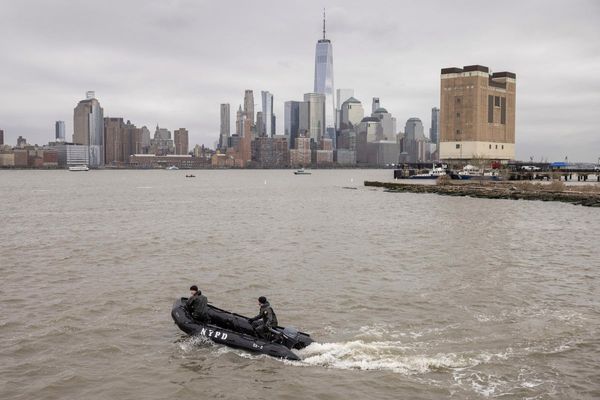
Donald Trump’s tariff strategy has at least one biblical connection: like the peace of God, it “passeth all understanding” (Philippians 4:7). Rival attempts to extract a rationale from the chaos include the idea that he is trying to devalue the dollar, or that he is seeking to “reshore” the manufacturing capacity that the US lost through decades of globalisation. My own hunch is that he just wants to show who’s the big boss around here – or as British science fiction author Charles Stross puts it, that he “expects individual nations to come to him, hat in hand, like terrified shopkeepers pleading for mercy from a mafia don”.
Cue the UK’s very own Trump whisperer, Keir Starmer, who, according to Politico, plans “to put a review of online safety rules on the table in trade talks” with the US. Which, translated, means that things such as the Online Safety Act and copyright rules that hinder US AI companies from looting the intellectual property of the British creative sector may soon become history. The only remaining question is whether Starmer possesses a suitably distressed hat for his penitent journey to Washington.
But it turns out that Trump’s obsession with tariffs goes back a long way. In his book Fear, about the first Trump administration, the journalist Bob Woodward told of how Gary Cohn, the president’s then chief economic adviser, repeatedly tried to explain to Trump that his “antiquated vision of roaring industrial chimneys and clanking steelworks busy with grateful blue-collar workers was no longer applicable, or indeed desirable, to an America reinventing itself in service industries and hi-tech products”. And when, exasperated, he asked the president why he held these views, Trump replied: “I just do. I’ve had these views for 30 years.”
So here we are. But instead of steel mills, Trump and his crew have now begun thinking that the Apple iPhone not only should, but could, be manufactured in the US. The other day, when the White House press secretary was asked whether Trump thought that iPhone manufacturing is the kind of technology that could move to the US, she replied: “Absolutely. He believes we have the labour, we have the workforce, we have the resources to do it.”
This is, to put it politely, baloney. The skills needed to put together a product as complex as an iPhone are not widely distributed in a country whose manufacturing capacity has been hollowed out by globalisation. The phone’s intricate supply chain is one of the wonders of the manufacturing world – as significant today as Toyota’s “lean” production system , or TPS, was in the mid-20th century. Apple seamlessly integrates components from 43 different countries, a task that has suddenly become even more challenging (and expensive) with the introduction of the Trump tariff regime. Which is why, with admirable foresight, Apple reportedly scheduled five huge cargo planes filled with assembled iPhones from China and India to arrive in the US before the tariffs were announced, leaving the company with enough inventory to see it through to the pre-Christmas launch of the iPhone 17. Neat, eh?
Bringing manufacturing back home, as Trump claims he wants to do, is much harder than he thinks. A good case study is provided by the lessons that TSMC – the world’s most advanced silicon chip manufacturer – has learned when setting up a new high-end fabrication plant in Arizona. The motivation was that TSMC’s home base is Taiwan and there were western concerns about the risk of a Chinese takeover, plus the fact that the Biden administration was providing lavish subsidies.
It’s a huge project, and – as you might expect – has faced difficulties, costs and delays that were not anticipated. For example, TSMC couldn’t find enough qualified American talent to do the jobs that the plant needs to function. So 600 new US engineers had to be sent to Taiwan for extensive training. Worse still, because of the shortage of local US talent, it had to recruit additional engineers in Taiwan, who had to be trained and deployed to the US to make TSMC Arizona function (with doubled salaries and extra benefits to boot).
And this training wasn’t just the usual two- to four-week corporate offsite stuff, but up to 18 months long. So before the plant produced a single silicon wafer, more than 1,000 engineers had to be trained from scratch. And the company reckons that even when it is working as planned, its output will be 50% more expensive than in Taiwan.
And the moral of the story? Bringing manufacturing back home can be done, but not within one electoral cycle. Which raises other questions beyond a columnist’s pay grade.
What I’m reading
Phone home
Flyover Country is a short story by Tim Maugham about what a future where iPhones are made in the US would really be like.
Magical shrinking
The Colors of Her Coat is an absolutely fabulous essay by Scott Alexander addressing how we are bored by miracles.
Bye words
William A Finnegan’s Persuasion Substack has Eulogy for a Republic, a farewell note to the US by a former diplomat.







